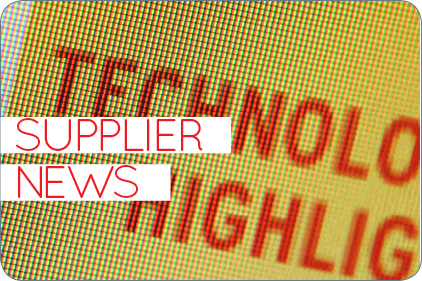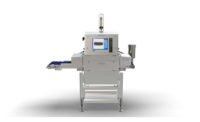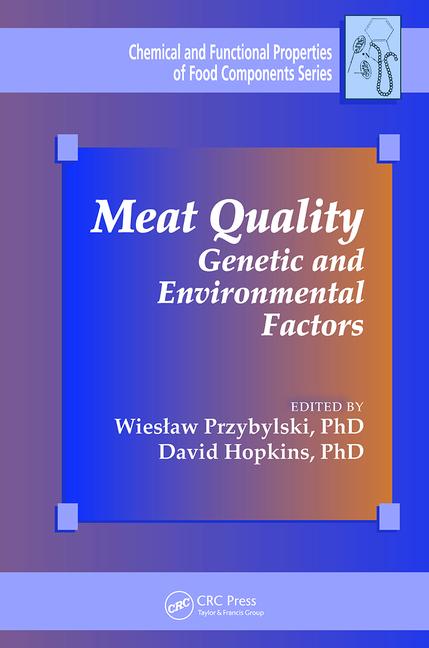Eagle Product Inspection: Solving the Quality Equation

In many ways, maintaining product quality and protecting brand image is similar to solving a mathematical equation, and product inspection is an essential element of this process. There are a number of variables to take into account before arriving at the appropriate solution for a production line to ensure product quality is upheld. With increasingly savvy consumers driving retailers and brands to demand the highest quality products available, product inspection for meat has moved beyond evaluating the product for contaminants – now flavor, nutritional value and ingredient integrity are equally as important. Advanced x-ray inspection technology has evolved to provide this quality assurance, combining the ability to identify and remove foreign bodies from the production line while delivering accurate fat analysis for the specified ratio of lean to fat and generating documentation at every stage of production to show due diligence, if required.
Finding the Balance between Health and Taste
Aside from upholding food safety by minimizing foreign body contamination, an important aspect of meat quality is its nutritional value and flavor. Consumers want the food they buy to be as tasty as possible and will be loyal to brands that consistently deliver this quality. Increasingly, consumers also want their meat to be as nutritionally “guilt-free” as possible, as shown by an increase in the number of healthy and low-fat meat products in supermarkets. For brands looking to target these customers, advanced fat analysis ensures that the meat they buy is at the exact specification they desire in terms of fat and lean levels, providing the first step to producing products that meet these growing health and nutrition demands. Innovations such as Dual Energy X-Ray Absorptiometry (DEXA) offer a non-invasive method to determine the precise Chemical Lean (CL) content for each meat product as it passes down the processing line. In addition, DEXA can inspect for contamination from foreign bodies, such as glass, calcified bone, mineral stones or metal fragments.
DEXA works by using two x-ray energy spectra to discriminate between tissue types of different densities by measuring the amount of x-ray energy absorbed in the meat, accurately measuring CL values to within ±1CL at high throughput speeds while simultaneously measuring product weight. Meat can be packaged to ‘point of lean’ for a given batch weight or blended to a target CL, which ultimately will help brands to achieve the balance between nutrition and flavor in the end product. Accurate fat analysis also enables the elimination of costly ‘giveaways’ through too much lean muscle in a particular pack, or expensive ‘fat claims’ when meat with higher levels of fat is sold. Such fat analysis technologies help meat producers deliver the precision measurement necessary to uphold their customers’ brand reputation in the eyes of consumers.
Threading the Way through the Supply Chain Maze
With consumer concern about food quality at an all-time high, not having full control or oversight of the supply chain can have drastic consequences for a brand. Being able to show due diligence in the event of a product recall is essential, as reflected in recent changes to the regulatory landscape for food manufacturers. X-ray and fat analysis are key in documenting the quality of products as they move through production, with advanced software and data storage enabling processors to access historical and real-time data for products that have been inspected.
In the European Union (EU), the European Food Safety Authority (EFSA) states in the General Food Law (Article 18) that you must be able to track any food through all stages of production, processing and distribution to prevent unsafe and substandard food reaching consumers. In addition, manufacturers must also notify regulators within 72 hours of any corrective action as a result of a safety issue. The Rapid Alert System for Food and Feed (RASFF) allows rapid exchange of such information across EU borders, so bad news can and must travel quickly. Similarly, the US Food Safety Modernization Act 2011 includes new requirements for traceability of meat products through the food chain, and the Food and Drug Administration (FDA) is developing an extensive product tracing plan for food manufacturers to enable them to locate the source of any meat quality issues.
X-ray inspection can meet the demand for this due diligence, featuring advanced networking capabilities that gather data from separate machines and store it in one centralized location for future analysis. These programs also enable meat producers to monitor line performance by generating reports from images and statistics collected from x-ray machines. Networking software like this allows manufacturers to trace any quality issues back to their source, allowing any corrective action to take place as quickly as possible.
Solving the Quality Equation
If consumers lose trust in a brand’s ability to deliver quality meat products, they will purchase from other brands. Brand owners need to be confident that the meat they receive from their suppliers will provide their consumers with the quality product they expect. Quality goes beyond ensuring meat is contaminant free; it also includes delivering accurate levels of flavor and nutrition. With regulators and consumers demanding more transparency at all stages of the meat supply chain, the onus is on meat producers to solve the quality equation, and x-ray technology can enable them to do the math.
As Global Head Sales, Service and Marketing at Eagle Product Inspection, Simon King is responsible for direct and partner channel development, shaping the direction of Eagle’s marketing strategy and expanding the company’s global reach to better serve customers and its agents around the world. Simon holds an MBA in International Business Management from the University of London and a BA (Hons) in Business and Finance from Manchester University. Prior to joining Eagle, Simon was Director, Global Sales and Marketing in a division of Elbit Systems. Before Elbit Systems, Simon held a number of senior, multi-national roles with Domino Printing Sciences, including experience periods running extensive operations in Japan and the Asia-Pacific region.
Looking for a reprint of this article?
From high-res PDFs to custom plaques, order your copy today!








